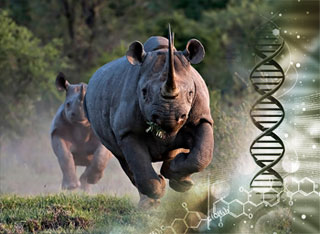Wildlife forensic DNA is a specialized area of forensic science that applies DNA testing methods to the investigation of crimes involving wildlife species. It is an essential tool for conservation efforts worldwide, aiding in the enforcement of laws and regulations that protect wildlife.
Wildlife forensics, an emerging and rapidly growing field, represents a vital intersection between science and law enforcement. At its core, wildlife forensics employs a range of scientific methodologies to investigate wildlife crimes, a critical tool in the fight against illegal wildlife trade, poaching, and various forms of animal abuse. Forensic DNA laboratories are an integral part of this endeavor, utilizing the latest genetic techniques to help protect and preserve our planet’s biodiversity. However, like any scientific field, wildlife forensic DNA laboratories are not without their risks and challenges.

The Various Use of Wildlife Forensic DNA
Species Identification: This is often necessary when the species of a seized animal part (like a skin, a piece of meat, or a tusk) needs to be determined. This helps in enforcing laws and regulations that protect certain species, and in identifying and stopping illegal wildlife trade.
Individual Identification: Similar to human DNA forensics, wildlife forensic DNA can be used to match a sample from a crime scene to a specific individual animal. This can help in cases of poaching or illegal hunting, by linking evidence to a particular animal.
Population Analysis: DNA analysis can be used to track the movements of certain species, identify population structures, and monitor genetic diversity within a population. This information can help in making effective conservation plans.
Parentage and Kinship Analysis: DNA testing can be used to determine the parentage or kinship of a certain animal. This can be particularly useful in cases involving the illegal pet trade or disputes over the ownership of a particular animal.
The Risks of Wildlife Forensic DNA
1. Contamination Risk: As with any DNA laboratory, one of the key risks in a wildlife forensic DNA laboratory is contamination. This can occur at any stage of the process, from the collection of the evidence in the field, through its handling and storage, to the various laboratory procedures. Contamination can compromise the integrity of the results and lead to erroneous conclusions, which can have serious legal implications.
2. Species Identification Challenges: Despite the extensive genetic databases available, not all species have been genetically characterized, which can pose difficulties in species identification. Additionally, the hybridization between species or the existence of cryptic species can confound identification efforts.
3. Legal and Ethical Risks: The use of genetic information in legal proceedings raises a host of ethical and legal concerns. These can include issues of privacy and ownership, especially when dealing with indigenous communities or protected lands. Ensuring that the rights of all parties are respected while upholding the aims of wildlife conservation can be a complex balancing act.
4. Resource Limitations: Wildlife forensic DNA laboratories require significant resources, both in terms of equipment and skilled personnel. For many developing countries where wildlife crime is most prevalent, such resources may be scarce. This can limit the effectiveness of these laboratories in combating wildlife crime globally.
Mitigating the Risks
To manage these risks, rigorous protocols must be in place at every stage of the process. This includes strict procedures for evidence collection, handling, and storage to minimize contamination. Regular audits and quality control checks can help ensure these protocols are adhered to.
Expanding and refining genetic databases will help in more accurately identifying species, while ethical guidelines and legal frameworks must be developed to address the ethical and legal challenges associated with using genetic information. International collaboration and funding can help provide the necessary resources to countries lacking in this area.
Conclusion
Wildlife forensic DNA laboratories play a vital role in protecting our planet’s biodiversity. While they face numerous risks and challenges, with the right protocols, ethical considerations, and resources, they can effectively combat wildlife crimes. As the field continues to evolve, it is crucial to address these risks proactively, ensuring that wildlife forensic science remains a reliable and robust tool in the fight against wildlife crime.
Help us Help Them! Think Wildlife Foundation is a non profit organization with various conservation initiatives. Our most prominent campaign is our Caring for Pari intiative. Pari is a rehabilitated elephant at the Wildlife SoS Hospital. 25% of the profits from our store are donated to the elephant hospital for Pari. Other than buying our wonderful merchandise, you could donate directly to our Caring For Pari fundraiser.
Written by: Sanghmitra Singh
